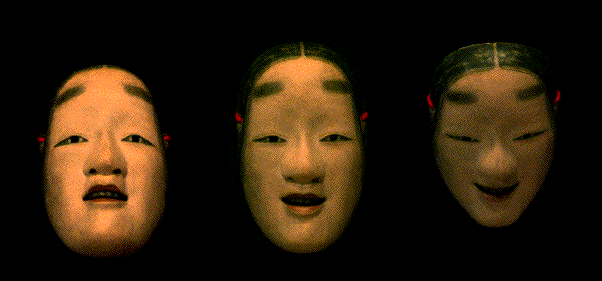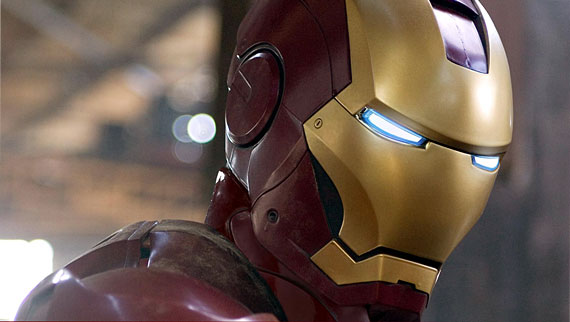What is odd, though, is that modern America has no unique or formalized or accepted form of masked performance. We are obsessed with realism, thanks to film, and masks on stage strike us as odd and off-putting. We want to see the actor's face to understand the emotions. Seeing something like this:

doesn't register to us as realistic. Bear in mind, that is the same mask shown at three different angles. Masks can give a wide range of emotional performances, but they require a certain style of training that is exceedingly rare in our commercialized entertainment industry.
But wait. There are plenty of masks on American stages. They just tend to look more like this:

or this:

and they're far more often associated with spectacle-heavy, art-light shows. Granted, Commedia in its original context had little to do with art, but it has become a theatrical tradition rather than simply a mode of entertainment. Mask work now is typically seen as either kitschy and child-friendly, or arcane and "artsy."
All of that discounts one thing, the true American Mask Tradition. I speak not of Julie Taymor-esque spectacle or Halloween antics, not of Hollywood slasher flicks or murder mysteries, but rather the Masked Hero. We see them all the time in movies and television, but we don't often associate their masks with their performance for the simple reason that the character is aware he is wearing a mask. Still, while America may not have originated the masked hero, we've certainly perfected it. For example, take Zorro. One of the earliest examples of a masked antihero in popular culture, he laid the groundwork for popular icons like Batman, the Phantom, and countless others. One man dons a mask to hide his identity and fights crime and corruption. It doesn't matter if the man behind the mask is a billionaire playboy, reclusive photographer, or sign-carrying lunatic in the street; when he's in the mask, he's the hero and we want him to win. We've also seen a great evolution of what a mask can become. For example:





As you can see, I've only included masks from film versions, as I am talking here about a more theatrical or at the very least performative mask tradition. However, what I want you to look at is the vast difference between some of these masks, from the foolishly simple to the elaborately obscuring. In every case, the mask augments the character, never detracting. That is the main objective in every situation. If the mask takes away from the character, it has failed. But Zorro's lends a vague anonymity (even though we can all see Antonio under there), The Phantom's gives a sense of unreality, Batman's strikes a certain sort of insane fear, Spider-Man's completely hides his identity, and Iron Man's serves as the hub of his tactical battle armor that he calls a suit. Each is best suited to its purpose, each designed for a reason just as much as the Noh or Commedia masks.
So, theatre scholars, eat your collective hearts out. Or, rather, nod your heads questioningly and proceed with your day.
